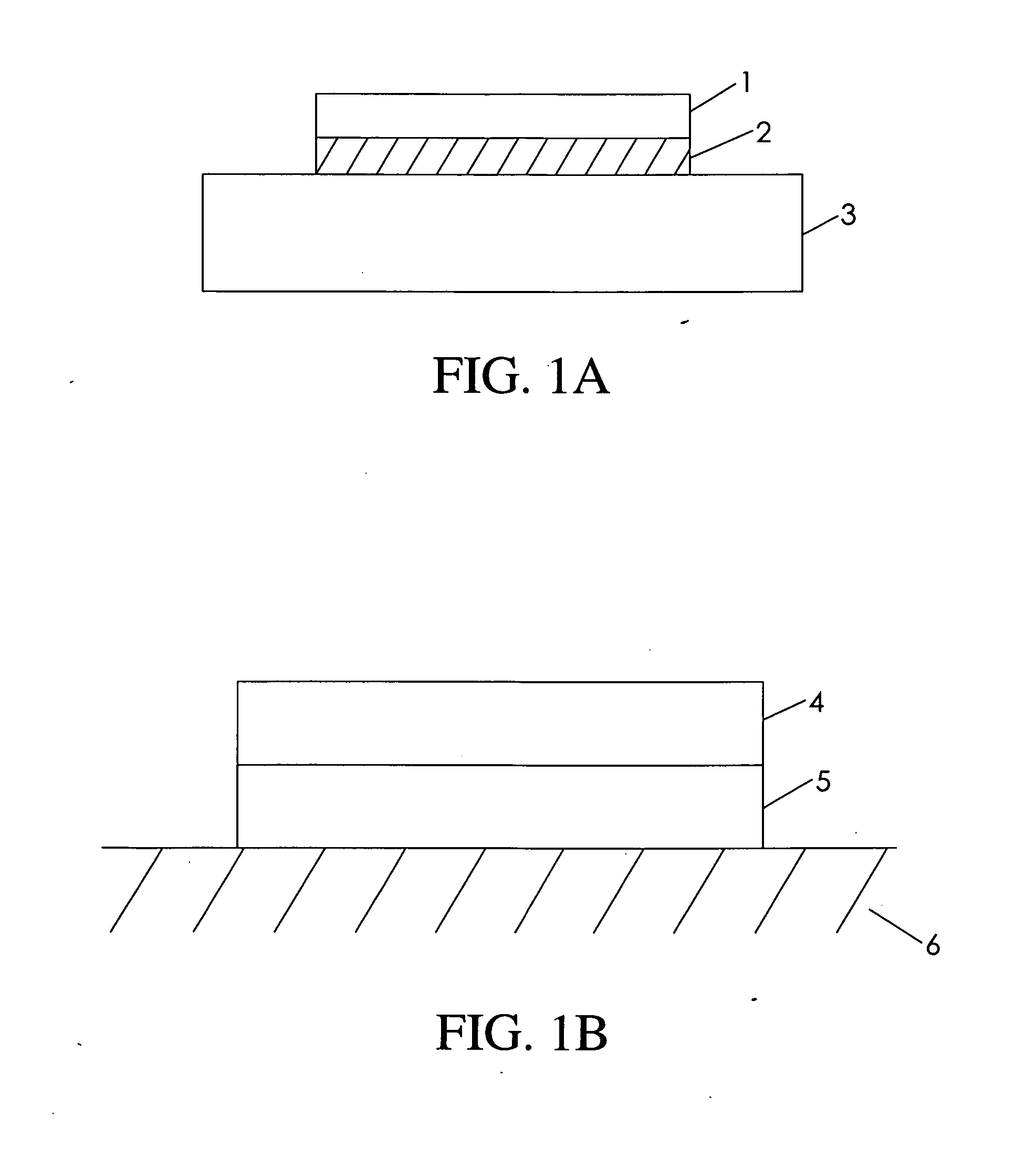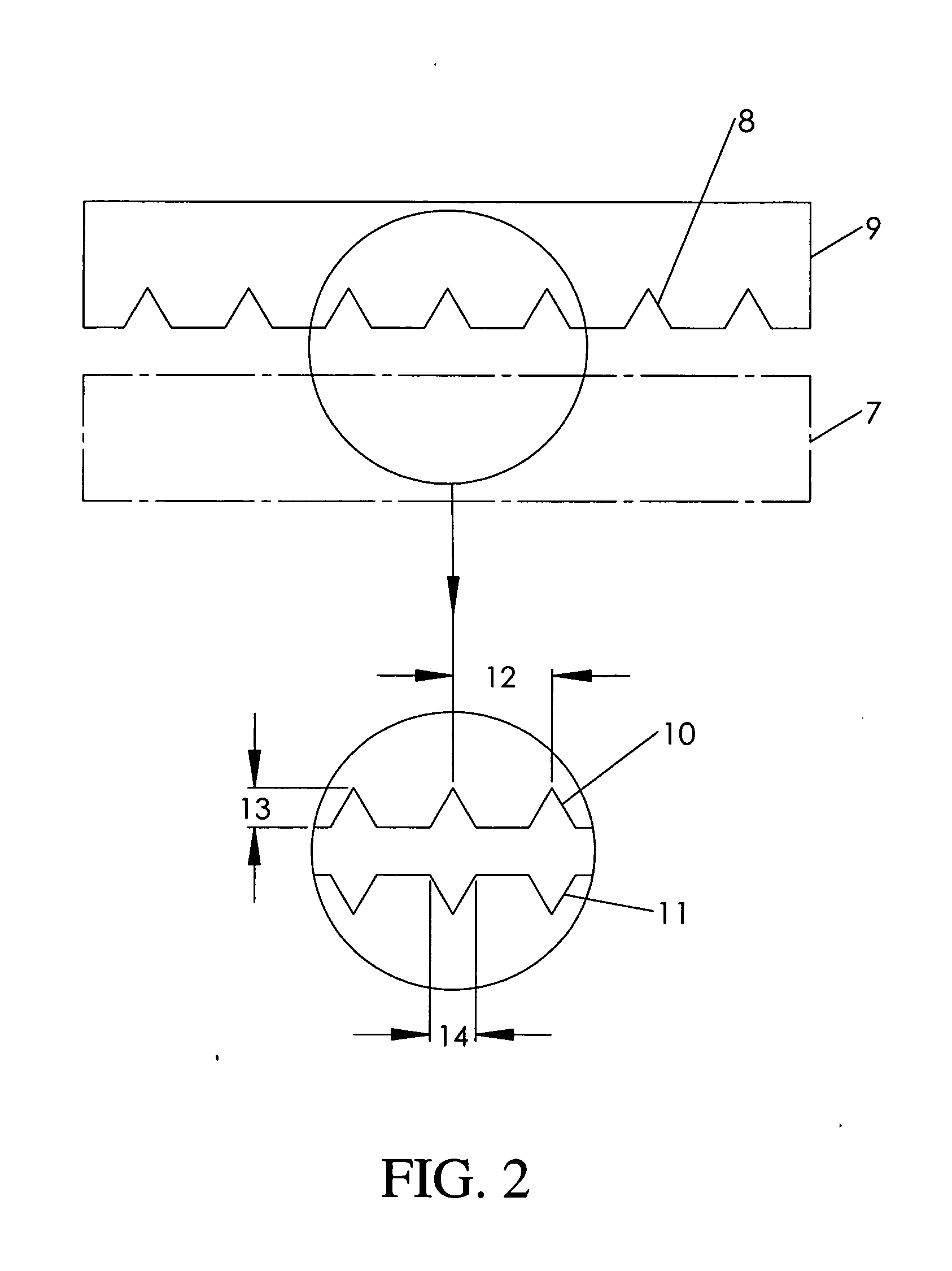Flexible semiconductor devices based on flexible freestanding epitaxial elements
a technology of flexible freestanding epitaxial elements and semiconductor devices, which is applied in the direction of chemically reactive gases, crystal growth processes, chemistry apparatuses and processes, etc., can solve the problems of limited speed and cost of semiconductor device layer growth loss of the benefit of growing on the flexible epitaxial element, and damage to the addition layer of the device, etc., to reduce the processing time of growing the layer, improve the epitaxial quality, and reduce the defect density
- Summary
- Abstract
- Description
- Claims
- Application Information
AI Technical Summary
Benefits of technology
Problems solved by technology
Method used
Image
Examples
Embodiment Construction
[0115]FIG. 1A depicts a typical waferbonded nitride device as seen in high powered LEDs. In this case, the flexible freestanding epitaxial element 1 typically contains a MQW structure and associated contact layers and metallizations as known in the art. The flexible freestanding epitaxial element 1 is attached via solder layer 2 to support 3, which is typically a thermally conductive material like silicon, germanium, or metal composites. The typical thickness of the flexible freestanding epitaxial element 1 is less than 3 microns and the flexible freestanding epitaxial element 1 lacks the mechanical integrity to be handled or processes without being attached to support 3. In addition, the stresses with the flexible freestanding epitaxial element 1 cause it to warp significantly if it were not attached to support 3. The thermal impedance through the solder layer 2 and support 3 determines the maximum power density of the device. Alternately FIG. 1 B depicts a flexible freestanding ep...
PUM
 Login to View More
Login to View More Abstract
Description
Claims
Application Information
 Login to View More
Login to View More - R&D
- Intellectual Property
- Life Sciences
- Materials
- Tech Scout
- Unparalleled Data Quality
- Higher Quality Content
- 60% Fewer Hallucinations
Browse by: Latest US Patents, China's latest patents, Technical Efficacy Thesaurus, Application Domain, Technology Topic, Popular Technical Reports.
© 2025 PatSnap. All rights reserved.Legal|Privacy policy|Modern Slavery Act Transparency Statement|Sitemap|About US| Contact US: help@patsnap.com



